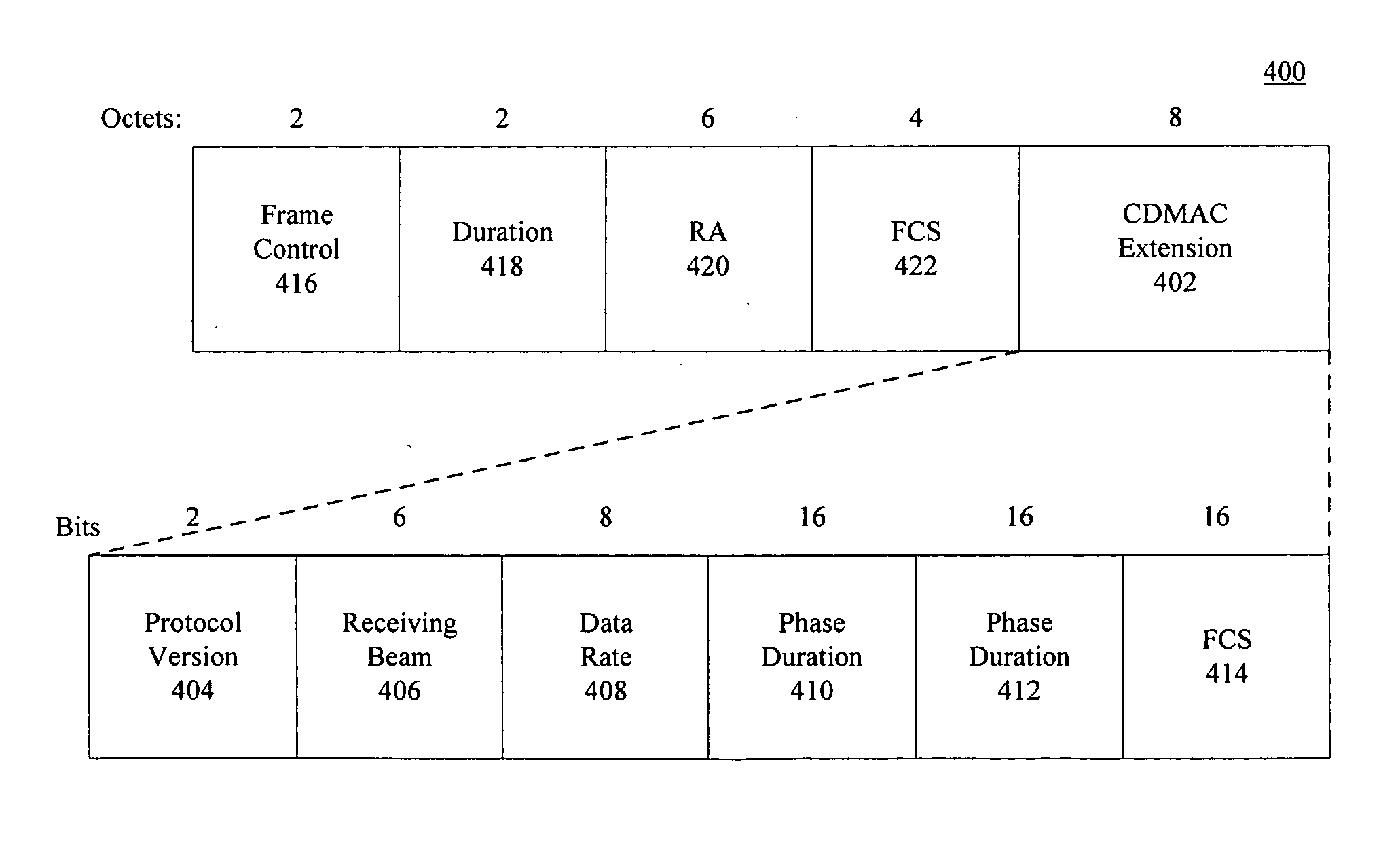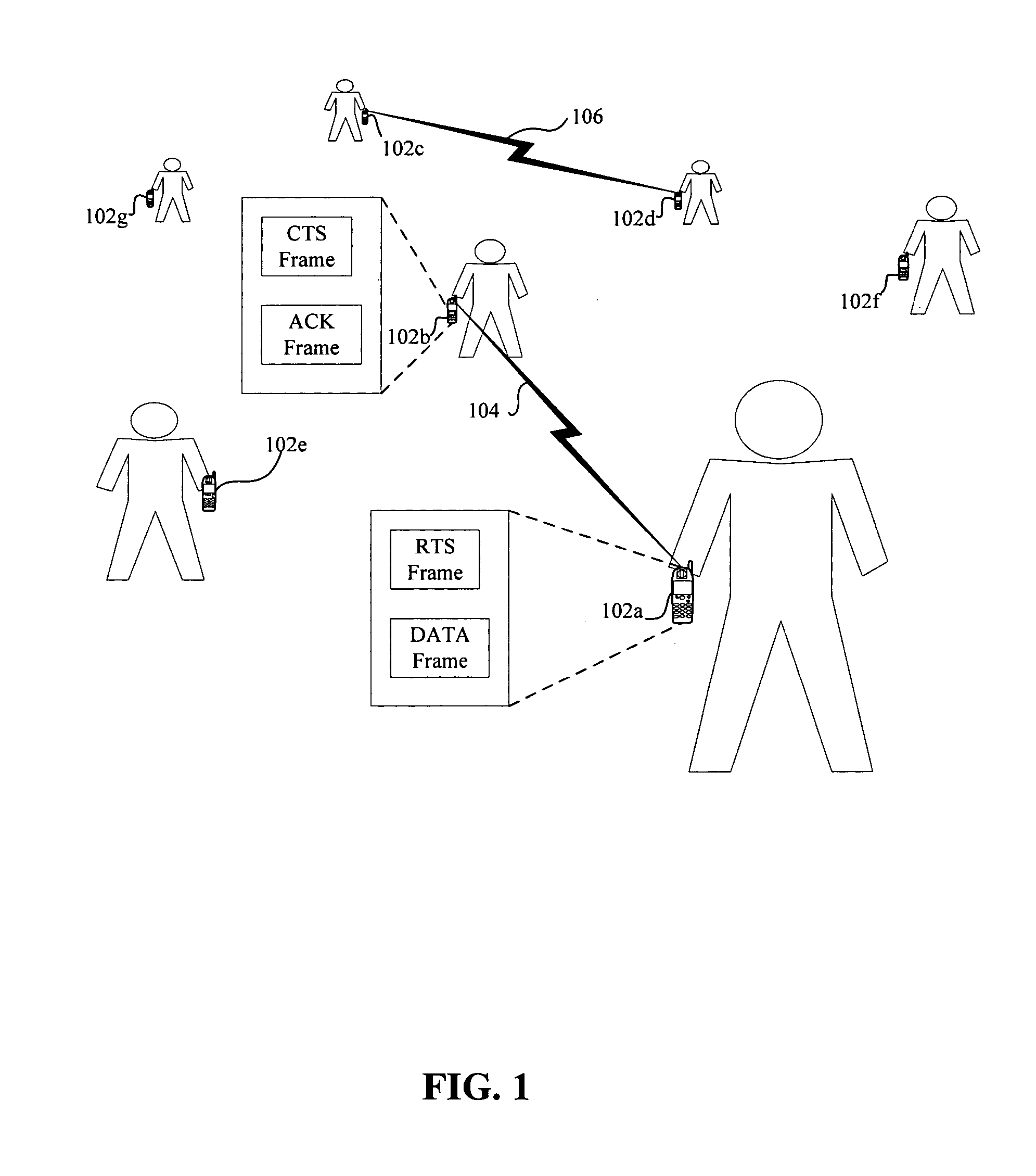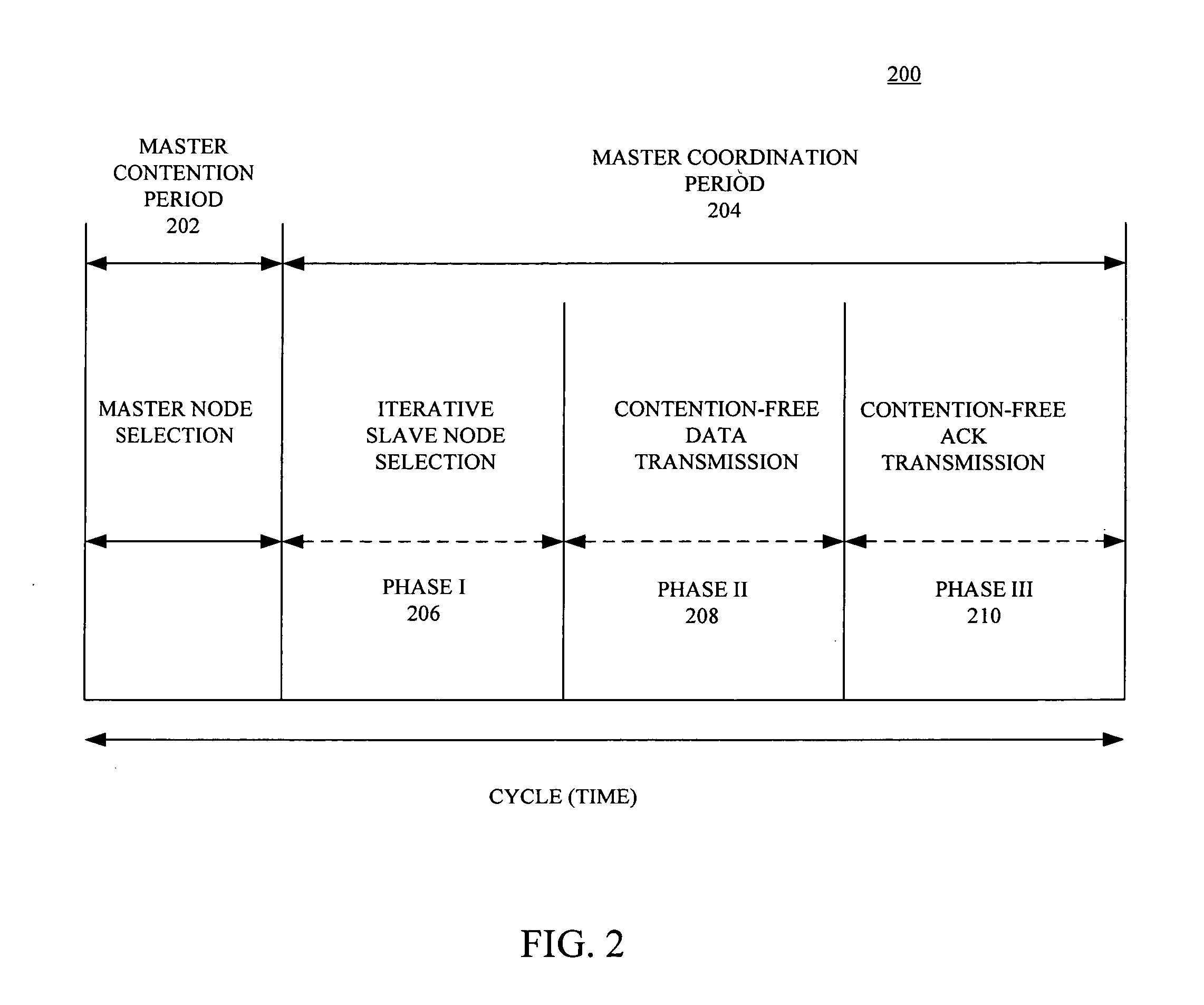Coordinated directional medium access control in a wireless network
a wireless network and access control technology, applied in the field of electronic communications, can solve the problems of high problem of directional signal and directional antenna use in ad hoc wireless networks, unsolved problems, and deafness, and achieve the effects of increasing energy efficiency, reducing and increasing the number of wireless networks
- Summary
- Abstract
- Description
- Claims
- Application Information
AI Technical Summary
Benefits of technology
Problems solved by technology
Method used
Image
Examples
Embodiment Construction
[0030]FIG. 1 provides a schematic diagram of a system 100 for wirelessly transmitting and receiving data packets, according to one embodiment of the present invention. The system 100 illustratively comprises a plurality of nodes, including a master sending node 102a and corresponding master receiving node 102b. The system 100 also illustratively includes another pair of nodes defining a slave sending node 102c and corresponding slave receiving node 102d. Illustratively, the system includes yet additional nodes 102e, 102f, 102g, any pair of which can define an additional slave sending node and corresponding additional slave receiving node selected as described more particularly below. As will be apparent from the ensuing discussion the system 100 can include still other nodes in addition to those shown. In the aggregate the nodes 102a-g define an ad hoc communication network.
[0031] Each of the exemplary nodes 102a-g of the system 100 is a communications node having the capabilities ...
PUM
 Login to View More
Login to View More Abstract
Description
Claims
Application Information
 Login to View More
Login to View More - R&D
- Intellectual Property
- Life Sciences
- Materials
- Tech Scout
- Unparalleled Data Quality
- Higher Quality Content
- 60% Fewer Hallucinations
Browse by: Latest US Patents, China's latest patents, Technical Efficacy Thesaurus, Application Domain, Technology Topic, Popular Technical Reports.
© 2025 PatSnap. All rights reserved.Legal|Privacy policy|Modern Slavery Act Transparency Statement|Sitemap|About US| Contact US: help@patsnap.com



